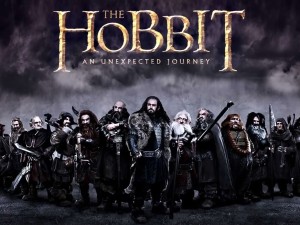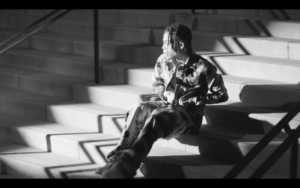 As the title suggests, I am about to disparage Peter Jackson’s latest installment of his Hobbit trilogy, The Desolation of Smaug. Before I do so, however, I should point out a few things. I am as familiar with the Tolkien literature as anyone could be without being totally obsessive, having read most of it multiple times starting when I was a teenager. I also believe that Jackson’s movie trilogy of the Lord of the Rings will stand as its definitive film interpretation for the foreseeable future, an accomplishment aided by digital animation technology that had finally progressed sufficiently to do justice to the visual grandeur of Tolkien’s Middle Earth. I only wish that Jackson had included the scene where Gandalf broke the staff of his fellow wizard Saruman. My complaint is not from loyalty to the source material—I am not a purist in that regard—but rather that Jackson wasted an opportunity. When you have a villain as wonderful as Christopher Lee, you should give him as much time on screen as possible.
As the title suggests, I am about to disparage Peter Jackson’s latest installment of his Hobbit trilogy, The Desolation of Smaug. Before I do so, however, I should point out a few things. I am as familiar with the Tolkien literature as anyone could be without being totally obsessive, having read most of it multiple times starting when I was a teenager. I also believe that Jackson’s movie trilogy of the Lord of the Rings will stand as its definitive film interpretation for the foreseeable future, an accomplishment aided by digital animation technology that had finally progressed sufficiently to do justice to the visual grandeur of Tolkien’s Middle Earth. I only wish that Jackson had included the scene where Gandalf broke the staff of his fellow wizard Saruman. My complaint is not from loyalty to the source material—I am not a purist in that regard—but rather that Jackson wasted an opportunity. When you have a villain as wonderful as Christopher Lee, you should give him as much time on screen as possible.
When I heard that Jackson was going to make a trilogy from The Hobbit, I wondered how he was going to fit three more movies into a story about one-fifth the length of The Lord of the Rings. When I saw An Unexpected Journey, though, I thought that Jackson might pull it off. He and his screenwriters had clearly done their homework, and they were prepared to take advantage of all of Tolkien’s supplementary literature regarding the Bilbo Baggins tale to enlarge it beyond what was contained in the original novel. As it was, the first installment stuck closely to the book, and its deviations were well grounded by the additional Tolkien material. For example, in the scene where the White Council met at Rivendell to discuss the quest, Gandalf’s concern that “Sauron could use the dragon to great effect” was lifted almost verbatim from Tolkien’s related story in Unfinished Tales.
Unfortunately, the wheels began to come off of The Desolation of Smaug after the elves hauled the dwarves (Tolkien’s spellings) to the dungeons. There he introduced a new character, the warrior she-elf Tauriel. No trouble there, but then Jackson made the ill-advised choice to insinuate a romance between her and one of the dwarves. This was preposterous to anyone even remotely familiar with the general character of elves and dwarves, let alone Tolkien’s stories. Elves tend to be tall and slender; dwarves are short and squat. Not a natural attraction. Jackson really expected his audience to take this development seriously?
The movie went downhill from there, degenerating into one extended fight scene after another, with intermittent visits to the original story to inch the plot forward. It was apparent that someone forgot to remind Jackson that while technologically enhanced swordplay and disaster footage can add drama to a movie, too much of those things becomes tedious, and I often found myself getting bored waiting for the fights to end so we could get on with the story. After all, it’s not like we really didn’t know where it was bound to go.
My opinion is probably in the minority. The Desolation of Smaug has done well at the box office, and the success of franchises like Fast and Furious has demonstrated the enduring appeal of action to movie-goers regardless of whether it makes any sense. I would caution Jackson, though, not to take too much comfort in the numbers so far. Sometimes you can get away with an inferior product once, but if you produce more of the same, sales can drop—sometimes drastically. Hell hath no fury like Tolkien fans
scorned, and it would be a shame if Jackson ended his movie canon with a dud. I’d like to think that he’ll be better than that, but we’ll find out when There and Back Again comes to theaters next Christmas.


